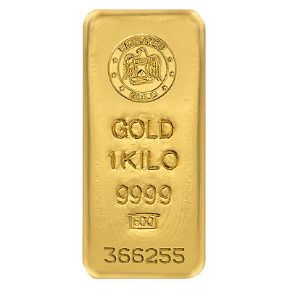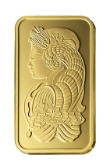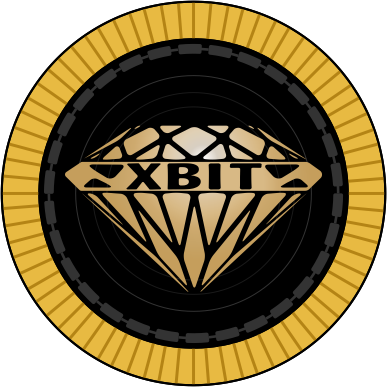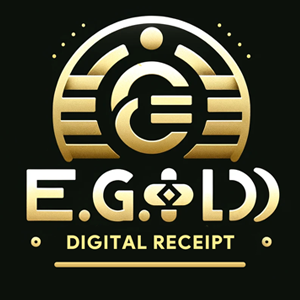Blog
Cryptocurrency has revolutionized the financial world, offering unprecedented opportunities for wealth creation and portfolio diversification. Yet, as more individuals accumulate substantial crypto holdings, the question of how to efficiently cash out these assets while minimizing tax burdens grows ever more critical. Traditional crypto-to-fiat cashouts via exchanges often trigger complex tax reporting, multiple taxable events, and cumbersome recordkeeping.
In 2025, an increasingly popular alternative is emerging among savvy investors and tax strategists: exchange-free crypto cashouts via the purchase of physical gold bars. This method offers a unique combination of privacy, tax efficiency, and asset preservation that many find superior to conventional exchange withdrawals.
This article explores how buying gold bars directly with cryptocurrency can simplify tax reporting, reduce taxable events, and create a smoother path for converting digital wealth into tangible, stable assets — all without the headaches associated with exchange-based cashouts.
The Challenges of Cashing Out Crypto on Exchanges
Tax Implications of Crypto-to-Fiat Trades
When investors sell cryptocurrency on centralized exchanges, they are generally subject to capital gains tax on any appreciation since the original purchase. Each sale or trade is a taxable event, requiring precise documentation of cost basis, sale price, date, and holding period.
Frequent Trades Create Multiple Tax Events: Active traders may generate dozens or hundreds of taxable transactions annually.
Complex Reporting Requirements: Exchanges issue tax forms, and many jurisdictions require detailed reporting of every trade.
Risk of Errors and Audits: The complexity and volume of reporting increase the risk of mistakes and government audits.
Exchange Withdrawal Limitations and Costs
Withdrawal Limits and Delays: Exchanges often limit daily withdrawal amounts and impose verification delays.
High Fees: Conversion and withdrawal fees can erode profits.
Regulatory Uncertainty: Regulatory pressures sometimes lead to account freezes or closures, trapping assets.
These challenges make exchange-based cashouts inefficient, costly, and stressful.
Why Exchange-Free Crypto Cashouts Are Gaining Traction
Direct Crypto-to-Gold Transactions
The core idea behind exchange-free cashouts is simple: instead of converting cryptocurrency into fiat currency on an exchange, investors use crypto to purchase physical gold bars directly from reputable dealers accepting crypto payments.
No Intermediate Fiat Conversion: Avoids multiple taxable events tied to converting crypto to fiat and then to gold or cash.
Fewer Taxable Events: The purchase of gold bars is typically a single taxable event, often with more favorable tax treatment.
Simplified Recordkeeping: One transaction with a clear cost basis and date simplifies tax reporting.
Increased Privacy and Control
Unlike exchange transactions, crypto-to-gold purchases may not be subject to the same automatic tax reporting requirements. This offers greater privacy and fewer disclosures to tax authorities, while still maintaining compliance through accurate recordkeeping.
Asset Preservation and Diversification
Physical gold is a tangible, historically proven store of value, providing:
Protection against inflation and currency devaluation.
Diversification from volatile crypto markets.
An asset that can be held outside the banking and digital ecosystems.
How Buying Gold Bars Simplifies Taxes: A Closer Look
1. Reducing Taxable Events
Each crypto trade on an exchange is a taxable event. For example, swapping Bitcoin for Ethereum can trigger capital gains tax even if you don't cash out to fiat. In contrast:
One Crypto-to-Gold Purchase = One Taxable Event: When you buy gold bars directly with crypto, you only trigger tax once — when disposing of the crypto to make the purchase.
No Multiple Sales or Withdrawals: Avoid cascading taxes associated with converting crypto to fiat and then buying gold or cash.
2. Deferring Taxes with Physical Assets
Hold Gold Indefinitely: Taxes are only due upon selling the gold, allowing investors to defer capital gains taxes.
Potentially Favorable Tax Rates: Some jurisdictions treat physical gold as a collectible or investment with different, sometimes lower, tax rates than cryptocurrency.
3. Simplified Documentation
Clear Purchase Records: Receipt of gold purchase clearly states date, amount, and price.
Avoid Complex Crypto Trade Logs: No need to reconcile dozens or hundreds of crypto transactions to determine gains.
Easier Audit Defense: Physical asset purchase records are straightforward and widely accepted.
Step-by-Step Guide to Exchange-Free Crypto Cashouts via Gold Bars
Step 1: Choose a Reputable Gold Dealer Accepting Crypto
Look for dealers with transparent pricing, solid reputations, and secure shipping or storage options. Some dealers specialize in crypto payments, accepting Bitcoin, Ethereum, or stablecoins directly.
Step 2: Calculate Your Crypto Cost Basis
Determine the original purchase price of your cryptocurrency. This figure is essential for calculating capital gains on the crypto you’ll use to buy gold.
Step 3: Make the Crypto-to-Gold Purchase
Initiate payment with your cryptocurrency wallet. Confirm transaction details and obtain a receipt. This transaction marks your crypto disposal event.
Step 4: Securely Store Your Gold
Options include:
Home safes with insurance.
Professional vaults or secure storage facilities.
Allocated storage programs offered by some dealers.
Step 5: Maintain Comprehensive Records
Keep:
Crypto wallet transaction logs.
Dealer invoices and receipts.
Shipping and storage documentation.
Any valuation reports or certificates of authenticity.
Step 6: Plan Future Sales with Tax Efficiency in Mind
When you sell your gold, consult tax professionals to time sales to optimize capital gains treatment and comply with reporting requirements.
Legal and Regulatory Considerations
Know Your Jurisdiction: Tax treatment of cryptocurrency and precious metals varies widely.
Declare Your Gains Honestly: Even with privacy advantages, accurate reporting remains a legal requirement.
Beware of Scams: Only use well-known, trusted dealers to avoid counterfeit or fraudulent transactions.
Stay Updated: Tax laws related to crypto and gold are evolving — ongoing compliance is essential.
Real-World Examples of Exchange-Free Crypto Cashouts
Case Study 1: Investor A
Holds 10 BTC purchased 3 years ago.
Avoids converting BTC to fiat on exchanges.
Purchases $300,000 worth of gold bars directly with BTC.
Pays capital gains tax only on BTC disposal at the point of purchase.
Defers tax on gold gains by holding bars long-term.
Case Study 2: Investor B
Frequent crypto trader with multiple taxable events annually.
Converts a portion of portfolio to physical gold via direct crypto purchase.
Significantly reduces tax filing complexity.
Gains portfolio diversification and stable asset allocation.
Advantages of Exchange-Free Crypto Cashouts Summarized
| Advantage | Explanation |
|---|---|
| Fewer Taxable Events | Only one transaction triggering tax instead of many. |
| Simplified Recordkeeping | Clear, concise documentation of purchase and cost basis. |
| Increased Privacy | No automatic exchange reporting to tax authorities. |
| Asset Diversification | Physical gold offers a hedge and store of value. |
| Tax Deferral Opportunities | Taxes only due when selling gold, allowing strategic timing. |
| Reduced Exposure to Exchange Risk | Avoids withdrawal limits, freezes, or closures. |
Potential Limitations to Consider
Liquidity Constraints: Selling physical gold can take time and may involve dealer premiums.
Storage and Insurance Costs: Physical assets require secure storage.
Market Price Fluctuations: Gold prices vary and may not track crypto gains.
Regulatory Risks: Future laws could change the tax or reporting treatment of physical gold purchased with crypto.
The Future of Crypto Cashouts: Hybrid Models and Innovation
New financial products are emerging to blend the best of both worlds:
Tokenized Gold: Blockchain-based gold tokens combine liquidity with physical gold backing.
Crypto-Gold ETFs and Funds: Offer diversified exposure without direct physical handling.
Stablecoin-Gold Swaps: Allow easier conversion between digital assets and gold-backed instruments.
Such innovations may further streamline cashouts and tax planning.
A Smarter Way to Cash Out Crypto
As crypto markets mature and tax scrutiny intensifies, exchange-free crypto cashouts through gold bar purchases provide a compelling alternative to traditional exchange conversions. This approach reduces taxable events, simplifies reporting, and adds a layer of asset security and diversification.
For investors looking to preserve wealth, lower tax friction, and gain stability, buying gold bars directly with cryptocurrency is more than a niche strategy — it is a smart, practical solution for the tax challenges of 2025 and beyond.
NOTE
This Content is the copyrighted content of EE.GOLD. All rights are reserved. You are welcome to share or use our content only by including direct links to our website. Any other form of reproduction, distribution, or use without proper attribution is strictly prohibited.
This Content is intended solely for educational purposes. The information provided does not constitute financial or investment advice.
Please note that Digital Storage Receipt, Secure Storage Solutions, and Physical Gold Sales are the only services offered by EE.GOLD.
We strictly adhere to government regulations and are firmly against all illegal financial or investment activities globally.
For further inquiries, feel free to contact us through our official channels.
Cryptocurrency has become a mainstream asset class in recent years, drawing millions of investors worldwide. However, with the rise of crypto investing comes the inevitable challenge of navigating complex and often confusing tax regulations. As governments intensify their scrutiny of digital assets, crypto holders are seeking innovative tax strategies to protect their wealth and optimize their portfolios.
In 2025, one trend stands out: a growing number of savvy investors are turning to gold bars and other physical precious metals as a strategic hedge against the tax burdens associated with cryptocurrency trading on exchanges. This article explores the evolving landscape of crypto taxation, why exchanges may not always be the best vehicle for investors, and how physical gold bars are emerging as a compelling alternative.
Understanding the Crypto Tax Landscape in 2025
The Current State of Crypto Taxation
Cryptocurrency taxation varies significantly from country to country, but some global trends are emerging:
Capital Gains Tax: In many jurisdictions, cryptocurrencies are treated as property or capital assets. Profits from selling or trading crypto are subject to capital gains tax, often with different rates for short-term vs. long-term holdings.
Income Tax: Some governments consider certain crypto earnings (like mining rewards, staking, or airdrops) as ordinary income.
Reporting Requirements: Exchanges increasingly comply with government reporting laws, sharing transaction data with tax authorities to enforce compliance.
Frequent Audits: Tax authorities are becoming more aggressive with audits and enforcement actions related to undeclared crypto income.
Tax Challenges for Crypto Investors
The unique nature of cryptocurrencies introduces several complications:
Complex Transaction History: Active traders generate a large volume of trades, each of which may be a taxable event. Tracking cost basis and fair market value can be cumbersome.
Hard Forks and Airdrops: These events create tax implications that are not straightforward.
Cross-Border Transactions: Crypto’s borderless nature complicates jurisdictional tax reporting.
Lack of Standardized Guidance: Regulations are evolving, sometimes changing retroactively, creating uncertainty.
Given these challenges, many investors are seeking strategies to simplify tax obligations while preserving investment gains.
Common Crypto Tax Strategies
1. Holding for Long-Term Capital Gains
One of the most widely used strategies is holding crypto assets for over a year to qualify for reduced long-term capital gains tax rates. However, in volatile markets, this may mean missing timely profit-taking opportunities.
2. Tax Loss Harvesting
Investors may sell losing positions to offset gains, reducing taxable income. This strategy requires careful timing and can become complicated with many trades.
3. Using Tax-Advantaged Accounts
In some countries, investors can hold crypto within retirement accounts or similar vehicles where taxes are deferred or avoided. However, options remain limited and are often subject to contribution limits and withdrawal restrictions.
4. Geographic Relocation
Some crypto investors move to tax-friendly jurisdictions with low or no crypto taxes. While effective, this is not practical for most.
5. Utilizing Crypto-Specific Tax Software
Sophisticated software automates tracking, reporting, and compliance, reducing errors and saving time, though it doesn’t reduce tax liability itself.
6. Transferring Assets to Family Members or Trusts
Complex estate and gift planning can shift assets to beneficiaries with lower tax burdens. This requires legal counsel and has risks.
Why Exchanges May Not Be Ideal for Crypto Tax Efficiency
Most crypto trading occurs on centralized exchanges, which provide convenience and liquidity but pose tax challenges:
Frequent Taxable Events: Every trade, including swapping one crypto for another, is generally a taxable event triggering capital gains or losses.
Automatic Reporting: Exchanges often report transactions directly to tax authorities, increasing transparency but limiting opportunities for tax avoidance or deferral.
Fees and Withdrawal Restrictions: High fees and withdrawal limits on exchanges can erode returns.
Risk of Freezing or Closure: Regulatory crackdowns can lead to exchange closures or asset freezes, jeopardizing access to funds.
Exposure to Capital Gains Volatility: With crypto’s high volatility, active trading can generate large taxable gains even when profits aren’t realized in fiat currency.
These issues prompt some investors to seek alternative investment vehicles that minimize taxable events and offer better tax control.
The Case for Physical Gold Bars in 2025
Historical Role of Gold as a Safe Haven
Gold has long been regarded as a store of value and a hedge against inflation, currency devaluation, and economic uncertainty. Unlike cryptocurrencies, gold is tangible, globally recognized, and uncorrelated to most financial assets.
Gold’s Unique Tax Advantages
Many investors overlook gold’s tax benefits:
Favorable Capital Gains Treatment: In some jurisdictions, physical gold held as a collectible or investment may be taxed differently than cryptocurrencies or stocks, often with lower rates or exemptions for holdings over certain thresholds.
No Frequent Taxable Events: Buying and holding physical gold incurs no taxable events until sold, allowing investors to defer taxes.
No Reporting by Dealers: Unlike crypto exchanges, gold dealers may not be required to report purchases to tax authorities, providing privacy and flexibility.
Inheritance and Gift Tax Advantages: Physical gold can be transferred with minimal tax consequences in estate planning.
Tax-Deferred Wealth Preservation
By holding gold bars outside the digital exchange ecosystem, investors can:
Avoid triggering multiple taxable events through frequent trades.
Maintain privacy from automated tax reporting systems.
Leverage gold’s long-term appreciation and stability without complicated tax filings.
Diversification and Liquidity
While gold is less liquid than cryptocurrencies, it remains relatively easy to sell or collateralize. Investors can diversify their portfolios with physical gold to reduce overall tax exposure and risk.
Comparing Crypto and Gold Tax Scenarios
Scenario 1: Active Crypto Trader on an Exchange
Makes 100 trades per year, each triggering taxable events.
Faces capital gains on each sale, including minor profits.
Must track cost basis, fair market value, and holding periods for every transaction.
Receives tax forms from exchanges and faces audits.
Taxable income may exceed actual realized fiat gains due to crypto’s volatility.
Scenario 2: Long-Term Gold Holder
Purchases gold bars and holds for several years.
No taxable events until physical sale.
Capital gains taxed at a potentially favorable rate.
No daily or monthly reporting requirements.
Avoids complex tax filings and risk of audits related to trading.
The difference in administrative burden and tax impact can be substantial.
How to Implement a Gold-Based Tax Strategy in 2025
Step 1: Assess Your Portfolio and Tax Position
Calculate your current crypto tax liabilities.
Evaluate your appetite for liquidity vs. tax deferral.
Consider your investment goals and risk tolerance.
Step 2: Acquire Physical Gold Bars
Purchase from reputable dealers with transparent pricing.
Consider gold bars of various sizes to balance liquidity and premiums.
Store securely in a home safe or professional vault.
Step 3: Rebalance Your Portfolio
Gradually convert a portion of crypto assets into gold.
Use gold as a long-term anchor to reduce taxable events.
Maintain some crypto exposure for growth and liquidity.
Step 4: Maintain Records
Keep purchase receipts and certificates of authenticity.
Document storage arrangements for insurance and tax purposes.
Retain records of any gold sales with dates and prices.
Step 5: Plan for Sale and Reporting
Consult tax professionals before selling.
Time sales to optimize capital gains treatment.
Report gains accurately but leverage potential tax advantages.
Potential Drawbacks and Considerations
Storage Costs: Physical gold requires secure storage, potentially incurring fees.
Lower Liquidity: Selling physical gold is slower and may involve dealer premiums.
Price Volatility: Gold prices can fluctuate, though typically less than crypto.
Regulatory Changes: Tax laws related to precious metals may evolve.
Opportunity Cost: Holding gold may limit exposure to high-growth crypto gains.
Investors must weigh these factors carefully.
Emerging Hybrid Strategies: Combining Crypto and Gold
Some innovative investors blend the benefits of crypto and gold to optimize tax efficiency and portfolio resilience:
Tokenized Gold: Blockchain-based tokens backed by physical gold offer liquidity with gold’s stability.
Gold-Backed Crypto Funds: Investment funds that combine crypto growth potential with physical gold reserves.
Stablecoin-to-Gold Swaps: Converting stablecoins into physical gold to hedge tax liabilities while maintaining digital assets.
Such hybrid approaches may define the future of tax-smart investing.
Final Thoughts: The Smart Investor’s Edge in 2025
As cryptocurrency taxation tightens worldwide, investors must adapt or face significant tax burdens. While exchanges offer convenience and liquidity, their frequent taxable events and automatic reporting can erode net returns. Physical gold bars provide an alternative with unique tax advantages, wealth preservation qualities, and diversification benefits.
By thoughtfully integrating gold into their portfolios, investors can mitigate tax complexity, defer capital gains taxes, and protect their wealth from volatility and regulatory risks. The smart investor in 2025 is not solely chasing crypto gains but strategically balancing assets—including gold—to maximize after-tax wealth.
Appendix: Useful Tips for Crypto Tax Planning in 2025
Stay updated on your jurisdiction’s tax laws and regulatory changes.
Use dedicated crypto tax software to track trades meticulously.
Consider consulting tax professionals with crypto expertise.
Keep comprehensive records of all transactions, airdrops, forks, and income.
Plan portfolio rebalancing to optimize holding periods for tax benefits.
Explore legal vehicles like trusts or retirement accounts where applicable.
Consider alternative assets like gold bars for long-term tax efficiency.
This comprehensive guide aims to equip investors with actionable insights into navigating the complex crypto tax environment in 2025, while highlighting why gold bars are becoming a favored tool in the tax strategist’s arsenal.
NOTE
This Content is the copyrighted content of EE.GOLD. All rights are reserved. You are welcome to share or use our content only by including direct links to our website. Any other form of reproduction, distribution, or use without proper attribution is strictly prohibited.
This Content is intended solely for educational purposes. The information provided does not constitute financial or investment advice.
Please note that Digital Storage Receipt, Secure Storage Solutions, and Physical Gold Sales are the only services offered by EE.GOLD.
We strictly adhere to government regulations and are firmly against all illegal financial or investment activities globally.
For further inquiries, feel free to contact us through our official channels.




















.png)

